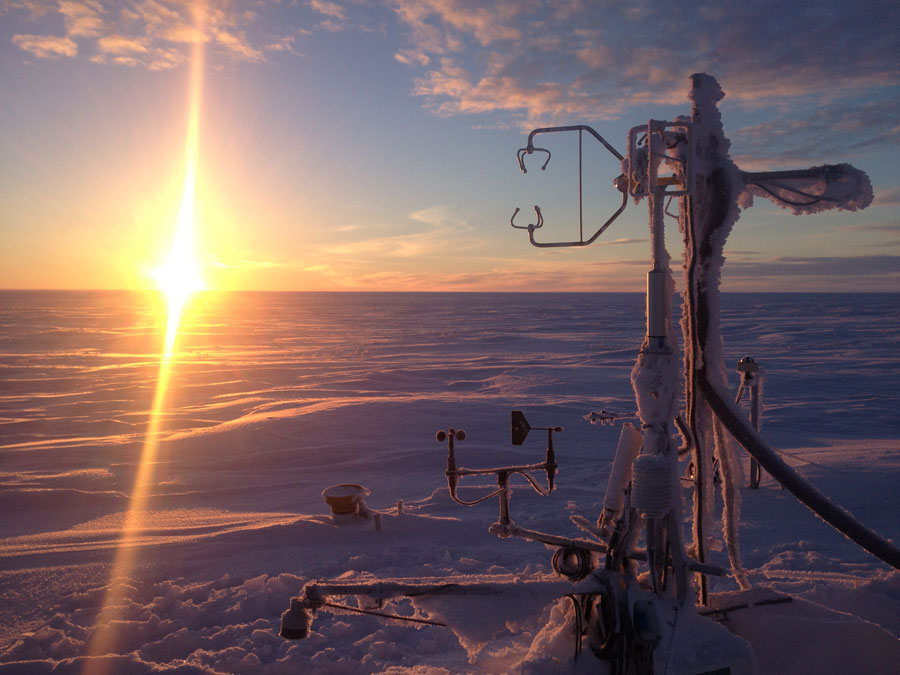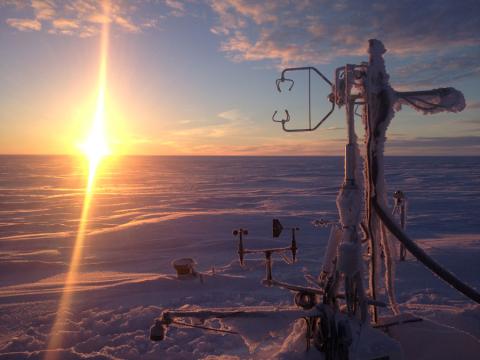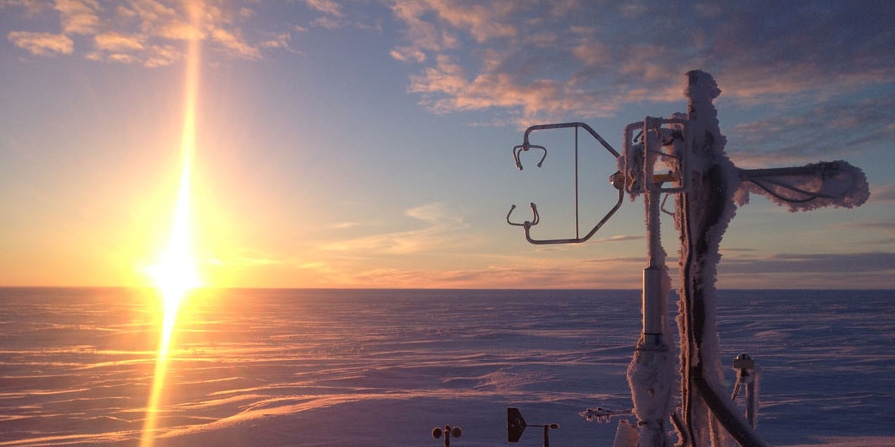Out on the tundra, ecologist Donatella Zona and her colleagues often think of home. “But we can’t go home,” she said. “We need to make measurements year round.” Summer on Alaska’s North Slope is quite pleasant. In the winter though, the scientists hunker down at their research site, where average temperatures drop to -18 degrees Fahrenheit.
Most of the time, they futz with wires, calibrate instruments, and check sensor deicers—all to detect faint wisps of methane seeping from the freezing soil. While many researchers study summer methane released by Arctic wetlands to predict future greenhouse gas emissions, Zona and her colleagues suspected cold season emissions are equally important to Earth’s changing climate, if not more.
To continue reading this feature article by Natasha Vizacarra in the 2017 edition of Sensing Our Planet on NASA's Earthdata website, see In the Arctic darkness
The article features data from CARVE-ARCSS: Methane Loss From Arctic- Fluxes From the Alaskan North Slope, 2012-2014, archived at the ORNL DAAC.
For more Carbon in Arctic Reservoirs Vulnerability Experiment Data see: https://daac.ornl.gov/cgi-bin/dataset_lister.pl?p=35



